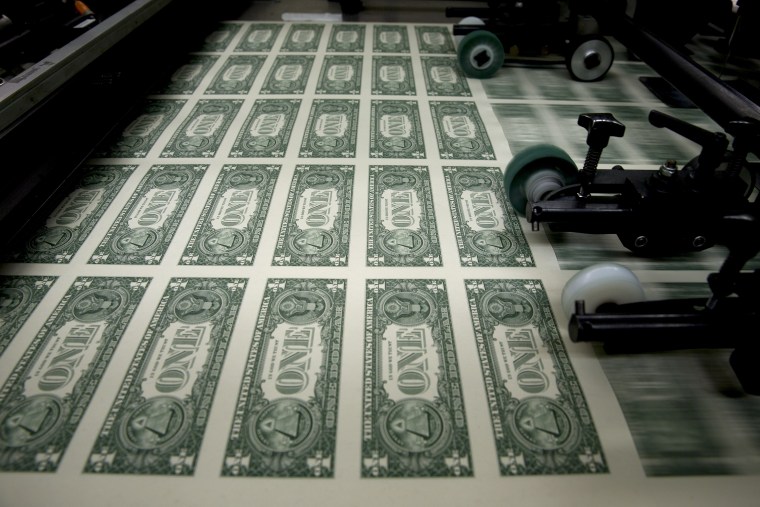Donald Trump's White House hasn't yet released its first budget blueprint, but the
New York Times reported over the weekend on a draft's "hit list" of programs the president and his team intends to eliminate, including "longstanding conservative targets like the Corporation for Public Broadcasting, the Legal Services Corporation, AmeriCorps and the National Endowments for the Arts and the Humanities." More surprising is Team Trump also targeting the White House's Office of National Drug Control Policy.For all of the president's rhetoric about tackling the opioid crisis, eliminating the ONDCP would be a giant step backwards.But while we wait for the official document, and Congress' reaction to it, the
Wall Street Journal published a
fascinating scoop on how Trump World is approaching budget math.
The Trump administration has drafted preliminary economic growth forecasts in its federal budget planning that rely on assumptions that are far rosier than projections made by independent agencies and most private forecasters, according to several people familiar with the discussions. [...]What's unusual about the administration's forecasts isn't just their relative optimism but also the process by which they were derived. Normally, the executive branch starts with a baseline forecast prepared by career staff of the CEA.... Discussions for the Trump administration unfolded differently, with transition officials telling the CEA staff the growth targets that their budget would produce and asking them to backfill other estimates off those figures.
Got that? Trump's team has started with the growth forecast that it likes -- which also happens to be consistent with what the Republican president said during the campaign -- and wants to work backwards to justify the numbers chosen in advance.The Federal Reserve and the Congressional Budget office expect growth of around 2% in the coming years, but Trump's budget will project growth between 3% and 3.5% a year, every year for the next decade.Maybe the White House would attract more capable economists if the administration didn't try nonsense like this.Vox's Matt Yglesias
highlighted some of the problems with the White House's approach.
It's customary for the White House to produce a budget forecast that is a bit rosier than what Congress, the Federal Reserve, or private sector forecasts generate. It's unusually for it to be so wildly at odds with the consensus.That's in part because most presidents lack Trump's shamelessness. Another part is that most presidents would worry that if you order CEA staff to make up fake numbers, they will leak that to the Wall Street Journal.But perhaps the biggest part is that normally presidents are trying, on some level, to work with Congress to get things done. Congress needs to use Congressional Budget Office numbers when legislating, so a fake White House forecast doesn't help a president's allies on the Hill. In effect, Trump is simply tossing congressional Republicans a hot potato -- telling them that he is disavowing responsibility for any of the trade-offs inherent in governing, and that the responsibility is all on them to work things out.
All of this is true, but let's not overlook the tax-cut angle. As a candidate, Trump vowed to approve massive tax breaks for the wealthy, without blowing a hole in the deficit. These ridiculous growth forecasts are directly connected: more growth means more revenue, which means more wiggle room to pay for tax breaks the country doesn't need and can't afford.The era of "fuzzy math" is back with a vengeance.
